Terms You Should Know
- Alternating current (AC): A current that periodically reverses direction and magnitude continuously.
- Direct current (DC): A current that does not reverse direction but maintains the same single steady flow.
- Single-phase: A circuit energized by a single alternating current.
- Three-phase/3-phase: A wiring system consisting of four wires and used in industrial and commercial applications. This system is suitable for installations requiring large motors. It consists of three hot wires and one ground wire. The voltage in each hot wire is out of phase with the others by one-third of a cycle, as if produced by three different generators.
- Cycle: One complete repetition of the sine wave pattern produced by a 360º revolution.
- Ohm’s Law: This law states that the current flowing in a circuit is directly proportional to the applied potential difference, and inversely proportional to the resistance in the circuit.
Ohm’s Law
To better understand the principles of electricity, it is useful to understand Ohm’s law and the ability to calculate different characteristics of electrical circuits within it. Georg Ohm (1789 – 1854) was a German mathematician and physicist who determined that doubling electrical voltage doubled the current’s flow, and if the resistance was doubled, the current flow would be cut in half.
Understanding electrical flow is similar to understanding water flow in a pipe. The water pressure represents voltage in a pipe, the current is represented by the amount of water flowing through the pipe, and the resistance is equal to the size of the pipe. The wider the pipe, the more water will flow because it is easier for the water to flow through a wide pipe than a narrow pipe. If the pipe were narrow, it would provide more resistance to the water flow. If the pressure of the water increases, the flow would also increase for the same pipe. The narrow pipe will provide more water flow with high pressure than with low pressure.
Three Quantities Related to Ohm’s Law
| Quantity | Symbol | Unit | Unit Symbol |
| Current | I | ampere | A |
| Voltage | E or V | volt | V |
| Resistance | R | ohm | Ω |
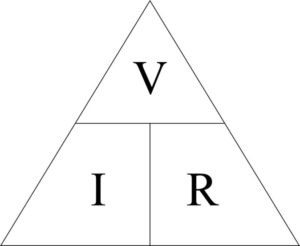
Ohm’s Law Triangle
This triangle can be used to calculate Ohm’s Law and determine the values in a circuit. Hence, if two quantities are known, the third can be calculated.
V = I x R I = V / R R = V / I
This mathematical equation shows that by doubling the voltage across a circuit, the current will also double. However, if the resistance is doubled, the current will fall by half. This relationship is measured in units of Ohms.
Alternating Current vs. Direct Current
Alternating current can change direction continuously, while DC or direct current does not. Alternating current can also be easily stepped up (increased) or stepped down (decreased) in voltage. The large transmission lines distributing power across the country use high-voltage AC because it can move quickly through the wire with minimal current or loss. DC power only moves in one direction and maintains the same amount of voltage throughout the entire length of travel. It would only be through dissipation that the voltage would decrease. A 9-volt battery would decrease in power over time.
A fan, light bulb, or motor might operate on AC power. The electricity serving that device flows through the wires very quickly and alternates direction just as quickly. While undetected by the human eye, a light bulb may illuminate and dim up to 60 times per second. Contrarily, the battery in a cell phone uses DC power. The charging cable has to be connected to a transformer that changes AC power to DC power, and the charging cable will provide constant DC voltage to the device.
Cycle
Using alternating current (AC), the power in the circuit takes the shape of a sine curve whereby, over a period of time, the curve is represented in 360°. The electric current changes direction periodically, both in magnitude and direction. During the positive cycle, the supply peaks during the positive cycle at 90°, and peaks at the negative cycle at 270°. The current moves through a complete cycle 60 times per second. Since the voltage in a single-phase rises and falls, constant power cannot be delivered to the load.
The voltage in a 240-volt circuit is twice as much as a 120-volt circuit; it is still one completed single-phase circuit and not a two-phase circuit.
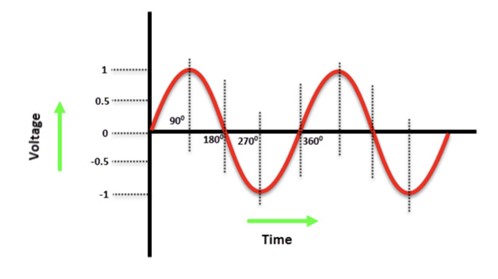
A single-phase system supplies alternating current that reverses polarity 60 times per second. A 3-phase system has three such currents. If the sequence of a single cycle is thought to encompass 360º, a 3-phase system contains three such cycles (120º out of phase with each other). Imagine each phase starting on the graph exactly 120º after the preceding phase.
Single-Phase Power
Most residential electric services are single-phase 120/240 volt systems. In order to provide 120 volts, there is one hot or positive wire, one neutral wire, and one ground wire. On the other hand, there are two hot or positive wires, one neutral wire, and one ground wire to create 240 volts.
3-Phase Power
Three-phase (3-phase) service in a building consists of three power wires. Each of the three power wires is 120° out of phase with each other. Therefore, in 3-phase power, during one cycle of 360°, each phase would have peaked in voltage twice (just like a single-phase), but the power never drops to zero since three simultaneous cycles are occurring. This steady stream of power provides the ability to handle higher loads, making the 3-phase supply suitable for industrial and commercial applications.
The idea of a 3-phase circuit will eliminate the flicker from the light bulb because there is never a time in the cycle where the voltage drops. As a result, this phase will transmit three times as much power as a single-phase power supply with only one additional wire. Three-phase power is primarily used in systems that require more power to start, or heavy loads, which might otherwise cause single-phase circuits to fail. Examples include motors and compressors on sizable commercial air conditioners, and drive motors on mechanical systems.
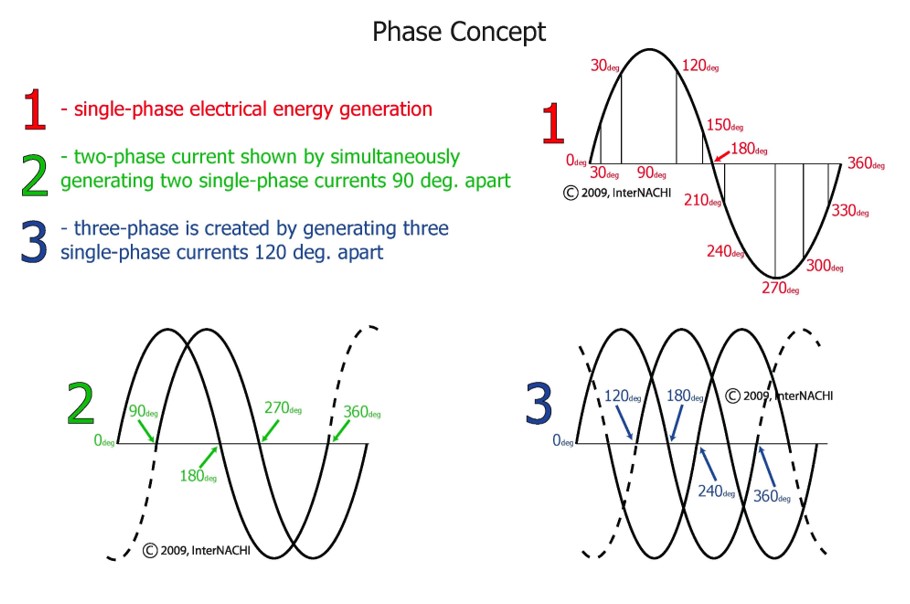
3-Phase Power: Advantages and Disadvantages
Advantages:
- Greater power density than single-phase circuits with the same amperage
- Keeps wire size and costs lower
- Easier to balance loads
- Minimize harmonic currents
- Less need for large neutral wires
Disadvantages:
- The higher voltage requires more insulation on motors
- Cannot handle overload
- Requires a third wire
How to Determine Whether the System Is 3-Phase Power
Determining whether a system is 3-phase can begin with reading the panel rating and design plate (nameplate). This is typically located somewhere on the dead front (not the distribution or circuit labeling, but the stamp for the panel’s design). This label should indicate the panel’s size, voltage, the number of wires at the main, and typically the date of panel’s manufacture. The following are examples of information gathered from the nameplate on the panel.
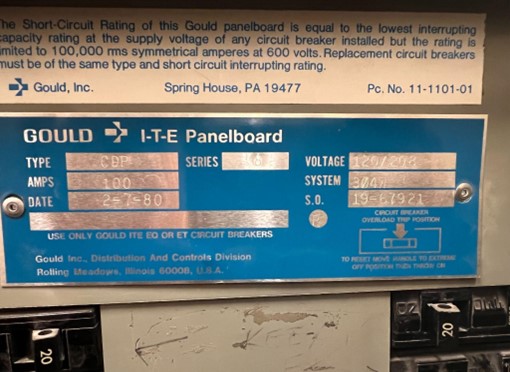
Information noted includes:
- Brand: Gould
- Amperage: 100-amp panel
- Voltage: 120/208
- Phase: 3-phase, four-wire
- Manufacture date: February 7, 1980
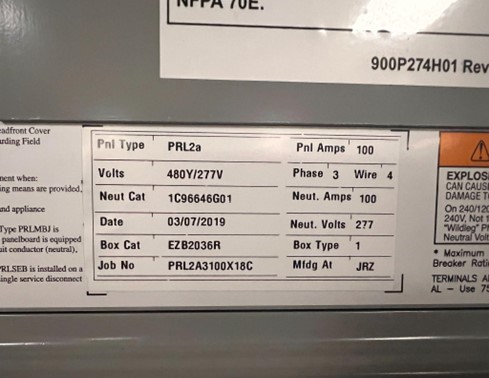
Information noted:
- Brand: Square D
- Amperage: 100-amp panel
- Voltage: 480Y/277
- Phase: 3-phase, four-wire
- Manufacture date: March 7, 2019
NOTE: Another method of determining whether the system is 3-phase is to look at the breakers. The system is 3-phase if there are breakers large enough to span three poles.
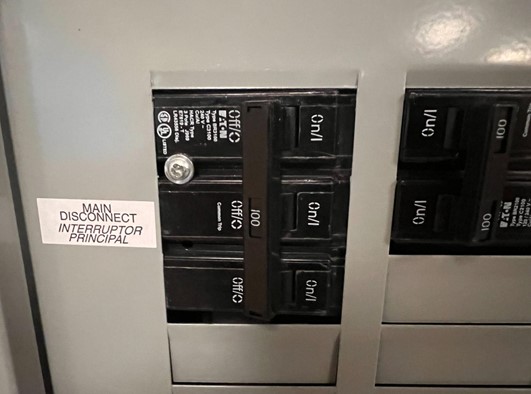
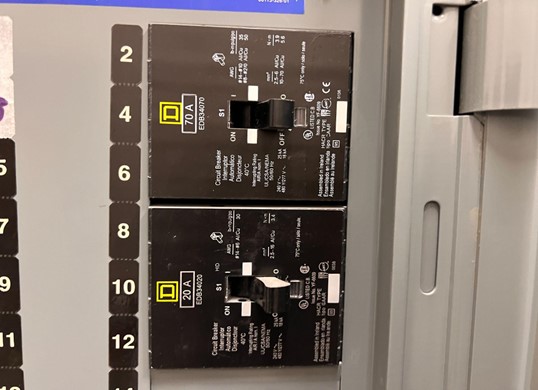
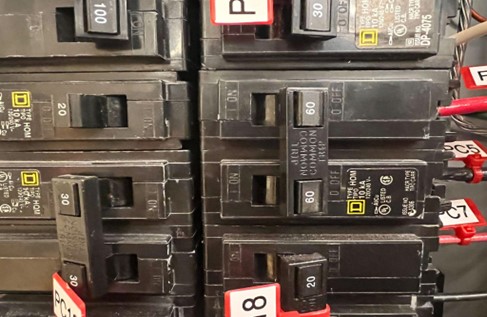
If the inspector chooses to remove the panel’s dead front, the wiring and circuits are revealed. Examining the interior will provide the opportunity to see if there are three positive or line bus bars, as well as the neutral and ground bus bars. A single-phase panel will only have two line or positive bus bars. Note that the ComSOP does not require the inspector to remove the dead front.
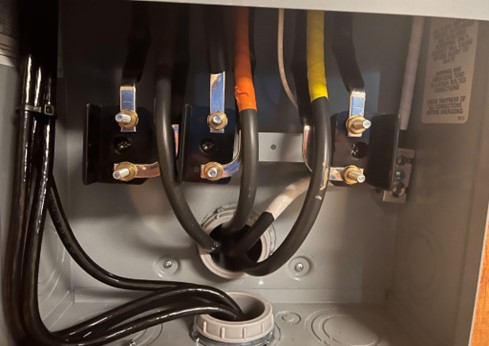
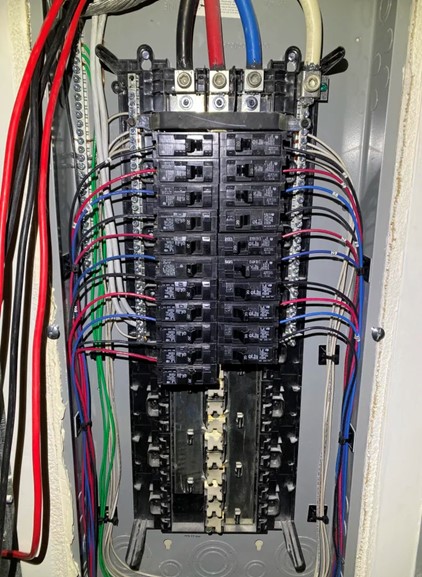
Conclusion
Most commercial clients will not understand the difference between single and three-phase power systems. Instead, they will understand if the current electrical system in the building will fit their needs. Updating electrical systems or adding new systems where the old one is insufficient can be costly and problematic.
A commercial property inspection, per the ComSOP, excludes proving load and system calculations, and focuses instead on inspecting and determining the rating and service amperage, in addition to describing what is present during the inspection. This information will help the client make decisions about the subject property. Therefore, it is essential for inspectors to understand the difference between single and 3-phase power to better present and document the system in their inspection report. Watch the Interior of a Three-Phase Panel video to learn more.
Article Written By: Rob Claus, CMI®
Additional Resources for Commercial Property Inspectors:


